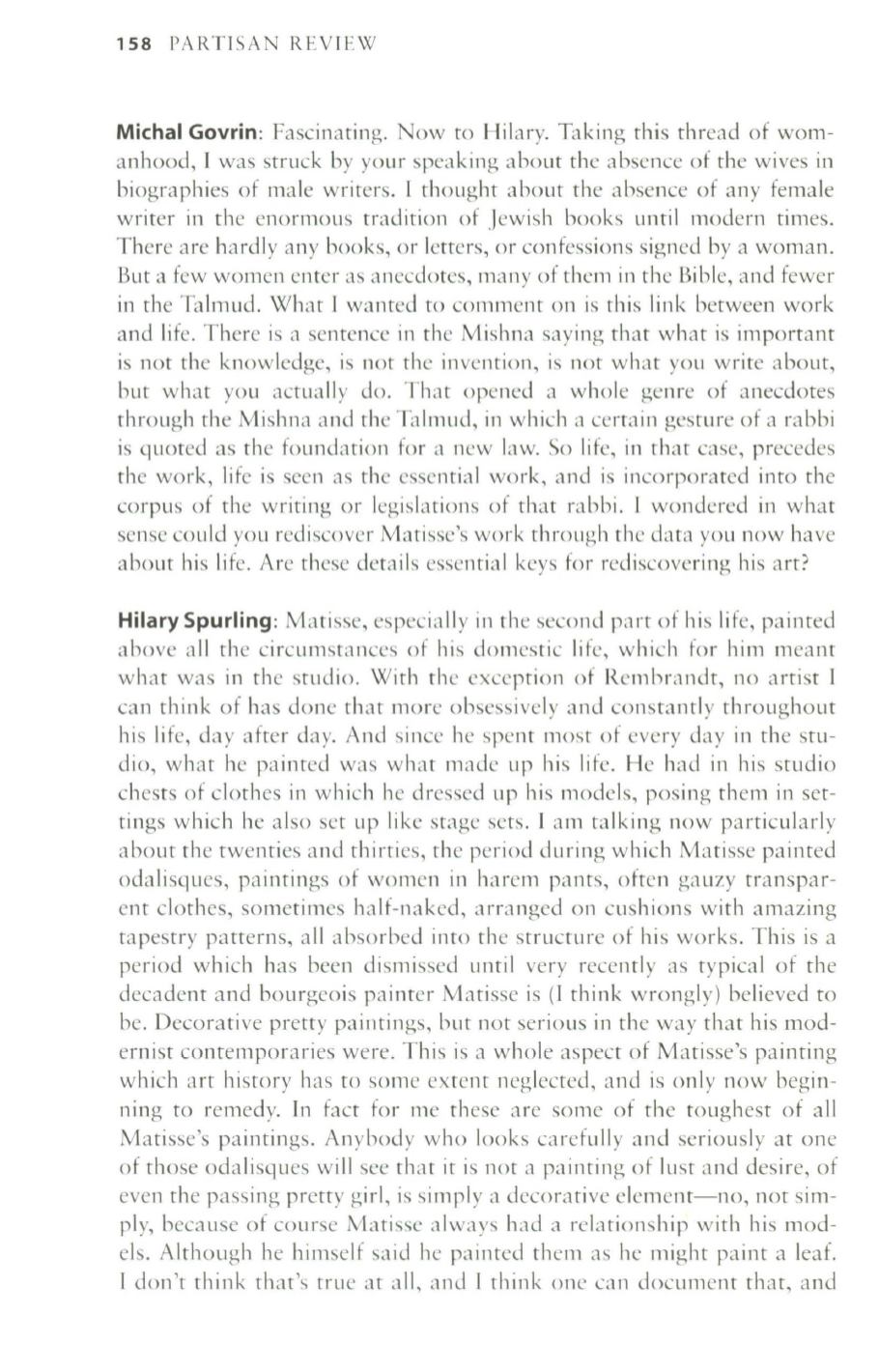
158
PARTISAN REVIEW
Michal Govrin:
Fascinating. ow
to
Hilary. Taking this thread of wom–
anhood, I was struck by your speaking about the absence of the wives in
biographies of male writers. I thought about the absence of any female
writer in the enormous tradition of Jewish books until modern times.
There are hardly any books, or letters, or confessions signed by a woman.
But a few women enter as anecdotes, many of them in the Bible, and fewer
in the Talmud. What I wanted
to
comment on is this link between work
and life. There is a sentence in the Mishna saying that what is important
is not the knowledge, is not the invention, is not what you write about,
but what you actually do. That opened a whole genre of anecdotes
through the Mishna and the Talmud, in which a certain gesture of a rabbi
is quoted as the foundation for a new law. So life, in that case, precedes
the work, life is seen as the essential work, and is incorporated into the
corpus of the writing or legislations of that rabbi. I wondered in what
sense could you rediscover Matisse's work through the data you now have
about his life. Are these details essential keys for rediscovering his art?
Hilary Spurling:
Matisse, especially in the second part of his life, painted
above all the circumstances of his domestic life, which for him meant
what was in the studio. With the exception of Remhrandt, no artist I
can think of has done that more obsessively and constantly throughout
his life, day after day. And since he spent most of every day in the stu–
dio, what he painted was what made up his life. He had in his studio
chests of clothes in which he dressed up his models, posing them in set–
tings which he also set up like stage sets. I am talking now particularly
about the twenties and thirties, the period during which Matisse painted
odalisques, paintings of women in harem pants, often gauzy transpar–
ent clothes, sometimes half-naked, arranged on cushions with amazing
tapestry patterns, all absorbed into the structure of his works. This is a
period which has been dismissed until very recently as typical of the
decadent and bourgeois painter Matisse is (I think wrongly) believed
to
be. Decorative pretty pailltings, but not serious in the way that his mod–
ernist contemporaries were. This is a whole aspect of Matisse's painting
which art history has
to
some extent neglected, and is only now begin–
ning
to
remedy.
In
fact for me these are some of the toughest of all
Matisse's paintings. Anybody who looks carefully and seriously at one
of those odalisques will see that it is not a painting of lust and desire, of
even the passing pretty girl, is simply a decorative clement-no, not sim–
ply, because of course Matisse always had a relationship with his mod–
els. Although he himself said he painted them as he might paint a leaf.
I don't think that's true at all, and I think one can document that, and


